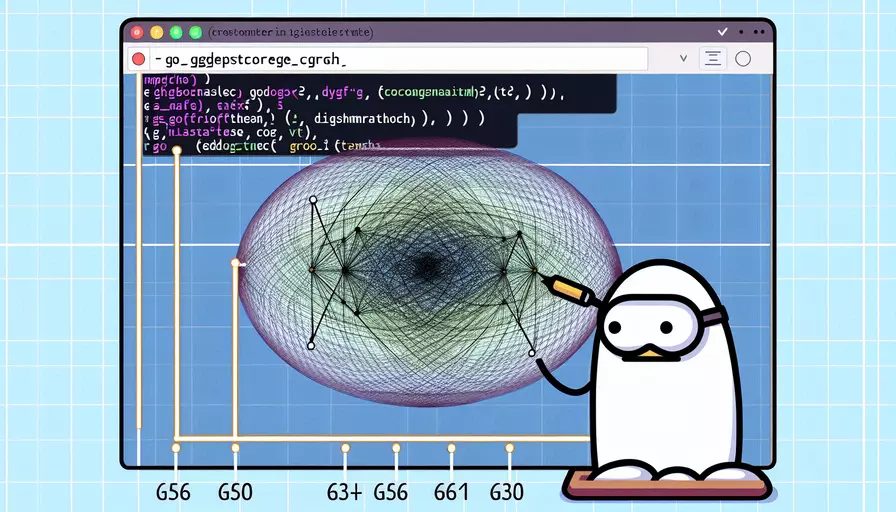
Go语言中的函数被称为“function”。函数是Go语言中的基本构建模块之一,用于组织代码和实现特定功能。以下是关于Go语言函数的详细介绍和相关内容。
一、DEFINITION AND BASICS
在Go语言中,函数(function)是指一段可以重复调用的代码块。它可以接受参数,执行特定的操作,并返回结果。函数的定义和调用是Go语言编程的核心内容之一。
二、FUNCTION SYNTAX AND DECLARATION
Go语言的函数使用func关键字进行声明,基本语法如下:
func functionName(parameter1 type1, parameter2 type2) returnType {
// Function body
return result
}
- func:关键字,用于声明函数。
- functionName:函数名,用户自定义。
- parameter1, parameter2:函数参数,类型在参数名之后。
- returnType:返回值类型,可以省略。
- return result:返回值,如果有的话。
三、EXAMPLES OF FUNCTION USAGE
为了更好地理解Go语言中的函数,以下是一些常见的函数示例:
- 无参数无返回值函数
func sayHello() {
fmt.Println("Hello, World!")
}
- 带参数无返回值函数
func greet(name string) {
fmt.Printf("Hello, %s!\n", name)
}
- 带参数带返回值函数
func add(a int, b int) int {
return a + b
}
- 多返回值函数
func swap(a, b int) (int, int) {
return b, a
}
四、FUNCTIONS AS FIRST-CLASS CITIZENS
在Go语言中,函数是第一类对象(first-class citizens)。这意味着函数可以:
- 赋值给变量。
- 作为参数传递给另一个函数。
- 从另一个函数返回。
示例:
- 函数赋值给变量
var addFunc = add
result := addFunc(1, 2)
fmt.Println(result) // 输出:3
- 函数作为参数
func applyOperation(a int, b int, operation func(int, int) int) int {
return operation(a, b)
}
result := applyOperation(3, 4, add)
fmt.Println(result) // 输出:7
- 函数作为返回值
func createMultiplier(factor int) func(int) int {
return func(x int) int {
return x * factor
}
}
multiplier := createMultiplier(2)
result := multiplier(5)
fmt.Println(result) // 输出:10
五、ANONYMOUS FUNCTIONS AND CLOSURES
匿名函数(Anonymous Function)和闭包(Closure)是Go语言中的重要概念。匿名函数是没有名字的函数,而闭包是指能够捕捉外部变量的函数。
示例:
- 匿名函数
func() {
fmt.Println("This is an anonymous function")
}()
- 闭包
func main() {
x := 10
increment := func() int {
x++
return x
}
fmt.Println(increment()) // 输出:11
}
六、ERROR HANDLING IN FUNCTIONS
Go语言独特的错误处理机制也是其函数设计中的一大特点。函数可以返回多个值,其中一个值用于表示错误。
示例:
func divide(a, b float64) (float64, error) {
if b == 0 {
return 0, errors.New("division by zero")
}
return a / b, nil
}
result, err := divide(4, 2)
if err != nil {
fmt.Println("Error:", err)
} else {
fmt.Println("Result:", result) // 输出:Result: 2
}
七、RECURSIVE FUNCTIONS
递归函数是指在其自身内部调用自身的函数。递归函数在处理复杂问题时非常有用。
示例:
func factorial(n int) int {
if n <= 1 {
return 1
}
return n * factorial(n-1)
}
fmt.Println(factorial(5)) // 输出:120
八、DEFER, PANIC, AND RECOVER
Go语言提供了defer、panic和recover机制来处理延迟执行、异常和恢复操作。
示例:
- defer
func main() {
defer fmt.Println("This is deferred")
fmt.Println("This is not deferred")
}
// 输出:
// This is not deferred
// This is deferred
- panic and recover
func main() {
defer func() {
if r := recover(); r != nil {
fmt.Println("Recovered from panic:", r)
}
}()
panic("something went wrong")
}
总结
通过理解和掌握Go语言中的函数(function),你可以编写更高效、更可维护的代码。建议在实际编程中多练习函数的定义和使用,并结合错误处理和递归等高级特性,以提升编码能力。
相关问答FAQs:
1. How do you say "Go language function" in English?
In English, we can say "Go language function" to refer to a function in the Go programming language. Go is a statically typed, compiled language that is known for its simplicity and efficiency. Functions in Go are blocks of code that can be executed when called, and they are an essential part of any Go program.
2. What is the definition of a function in the Go programming language?
In the context of the Go programming language, a function is a reusable block of code that performs a specific task. It is a fundamental building block of any Go program and is designed to be modular and independent. Functions in Go can have parameters, which are inputs to the function, and they can also return values, which are the outputs of the function.
3. How are functions used in the Go programming language?
Functions in the Go programming language are used to break down complex tasks into smaller, manageable chunks of code. They promote code reusability, as functions can be called multiple times from different parts of the program. Functions in Go can also be used to organize code and improve readability, as they encapsulate specific functionality and make the overall program structure more modular. Additionally, Go functions can be passed as arguments to other functions, allowing for higher-order programming techniques.
文章标题:go语言函数英文怎么说,发布者:worktile,转载请注明出处:https://worktile.com/kb/p/3508254

 微信扫一扫
微信扫一扫  支付宝扫一扫
支付宝扫一扫 